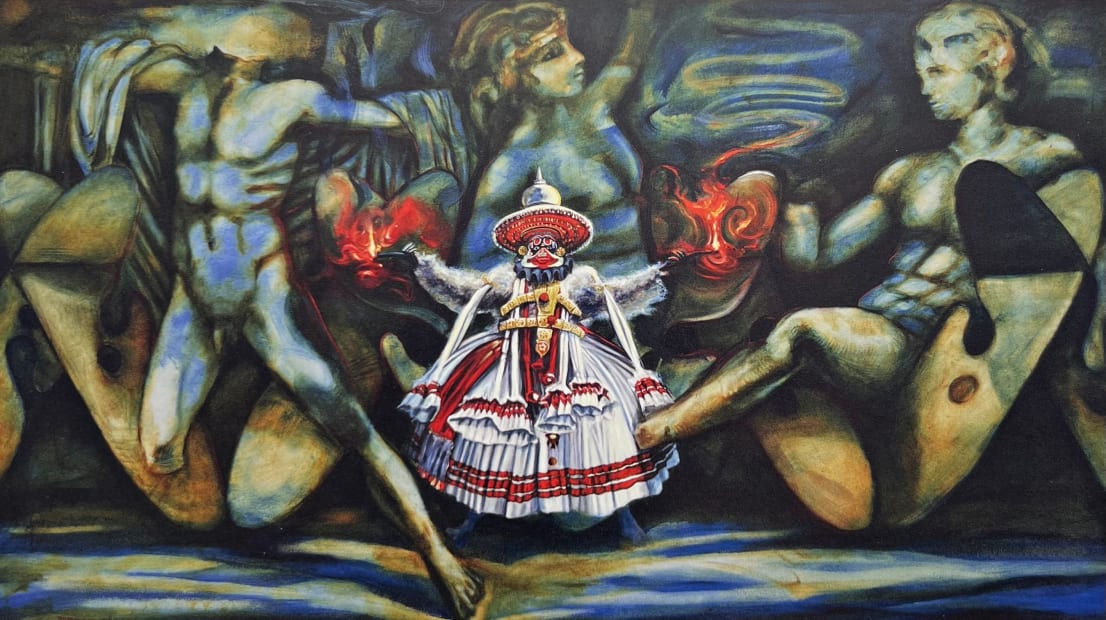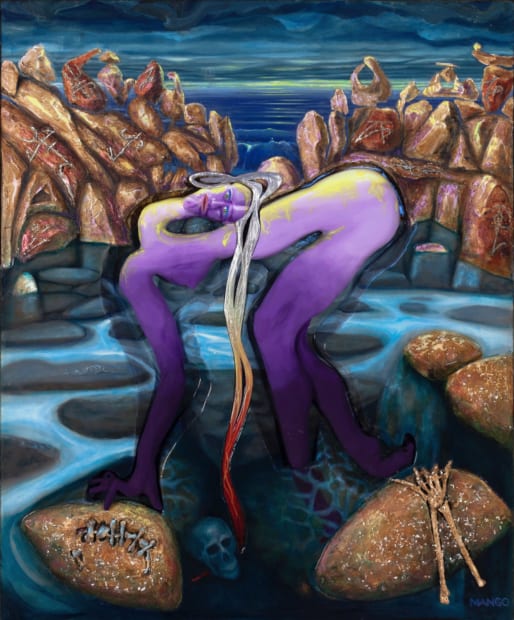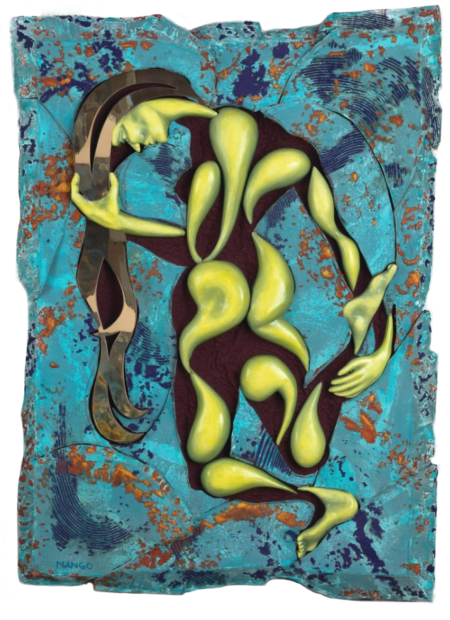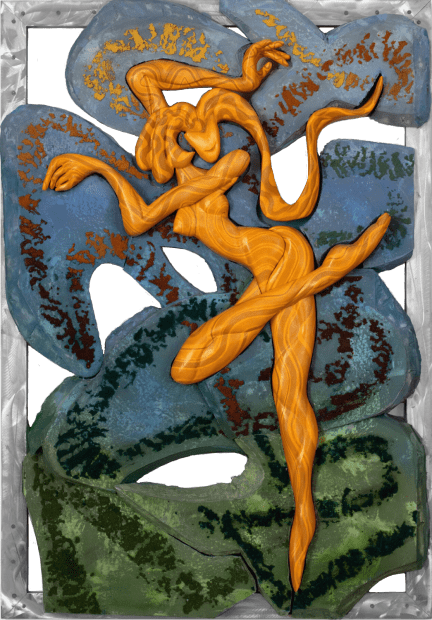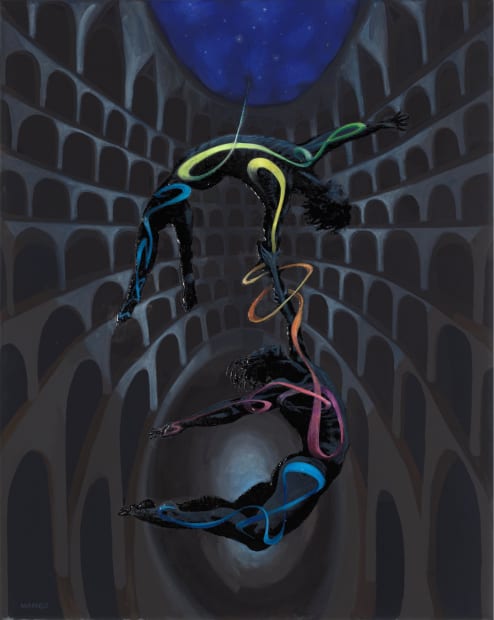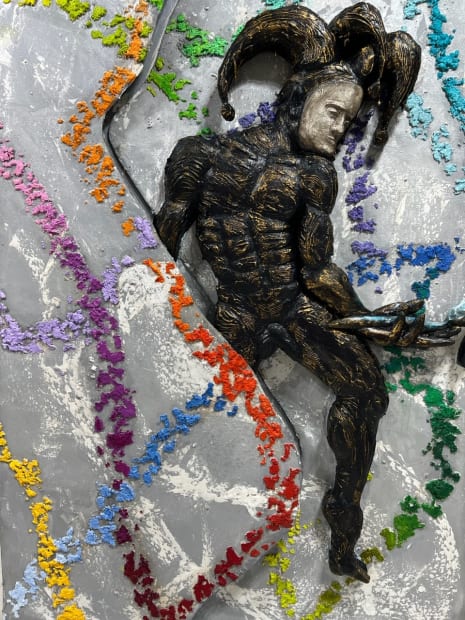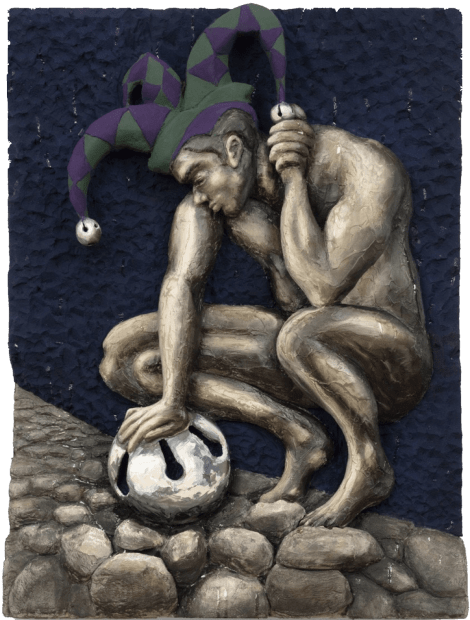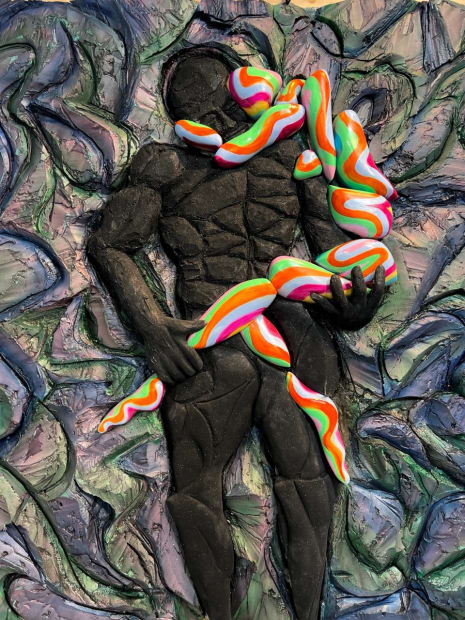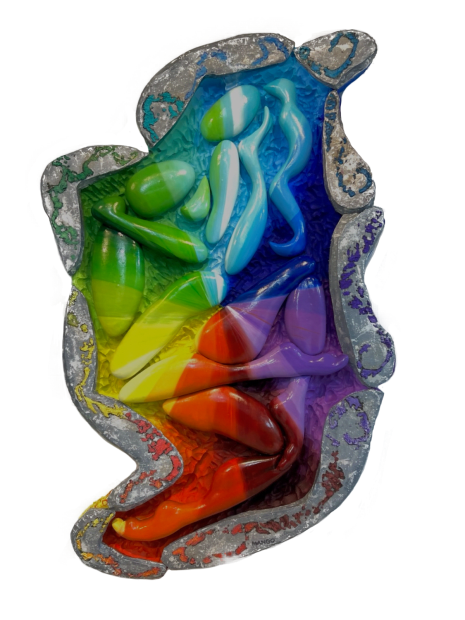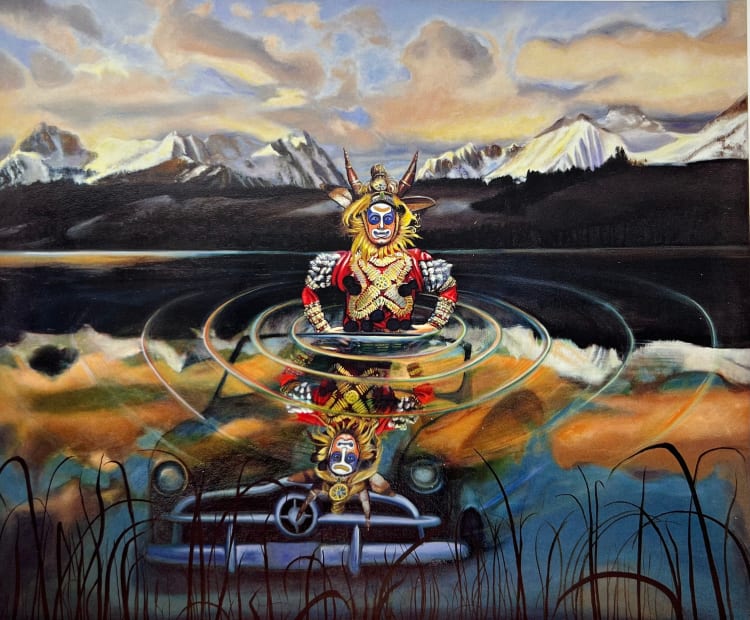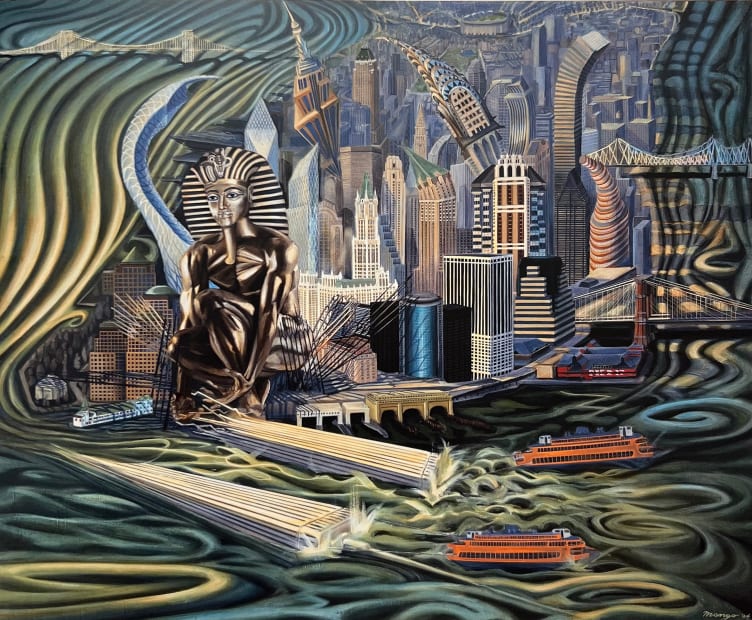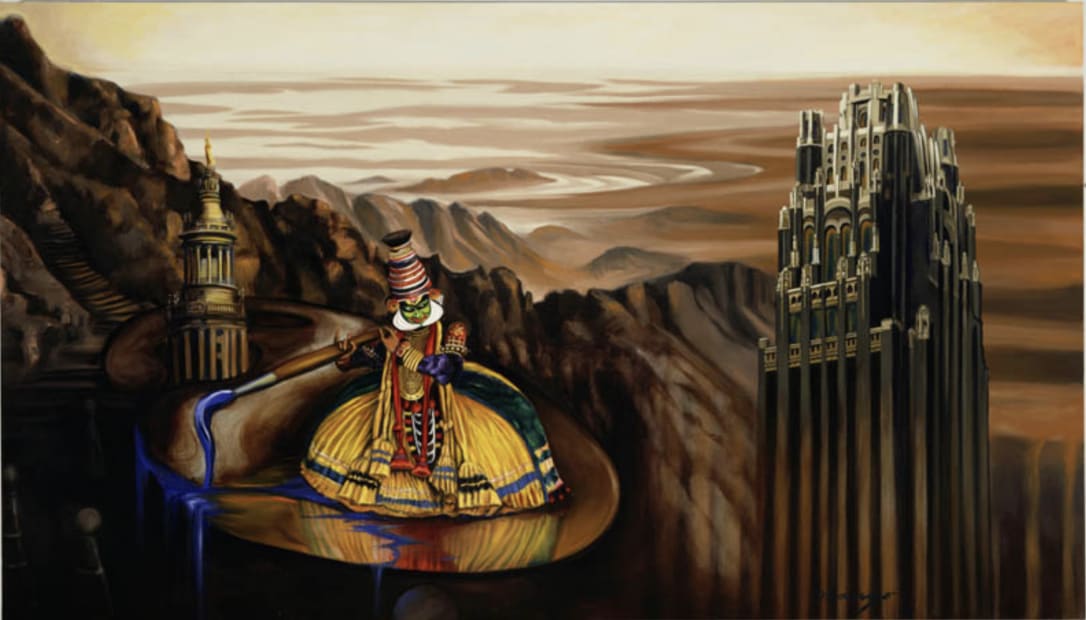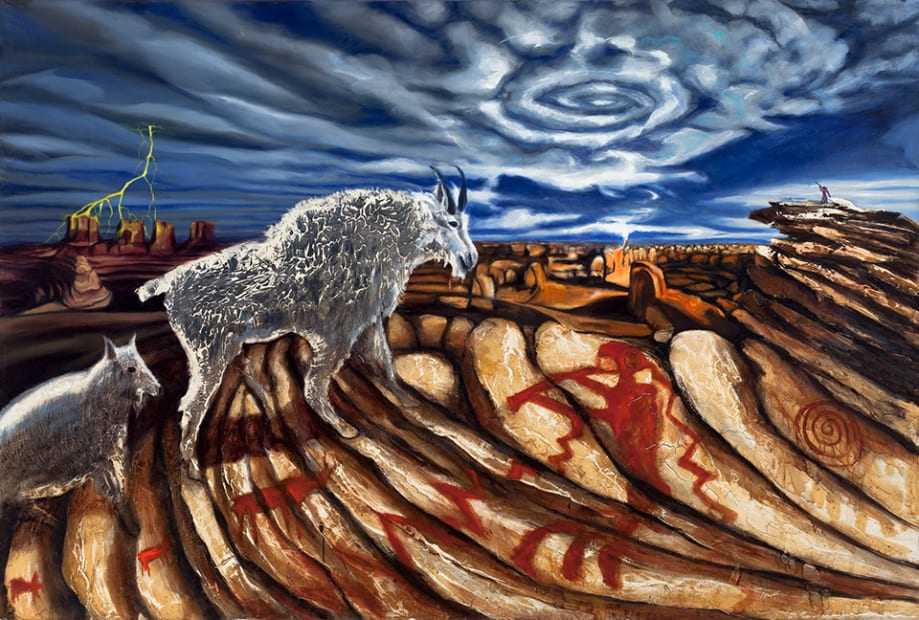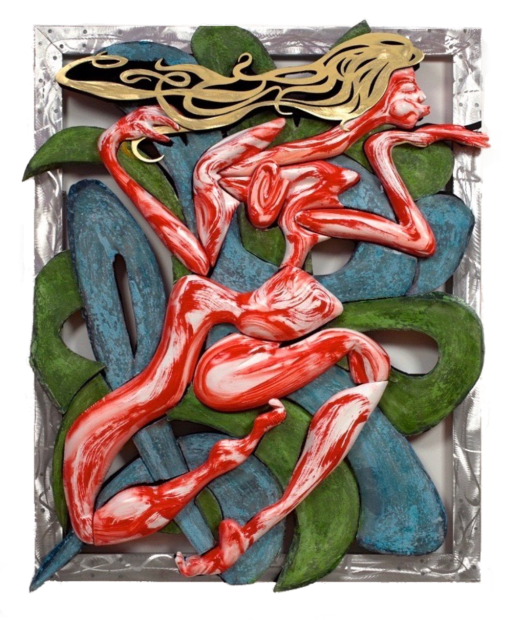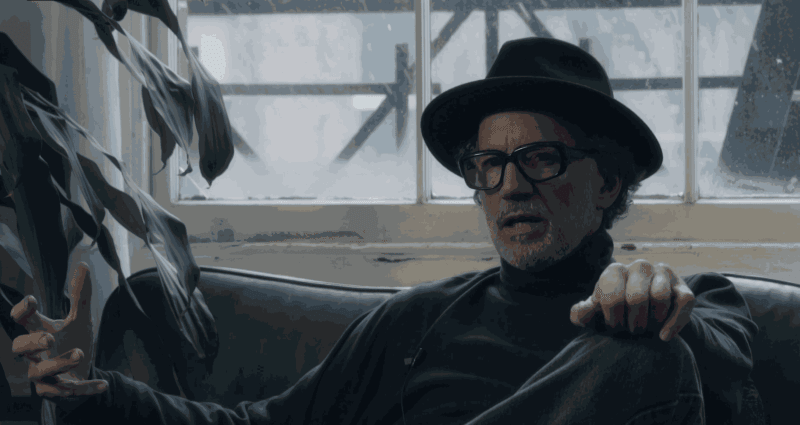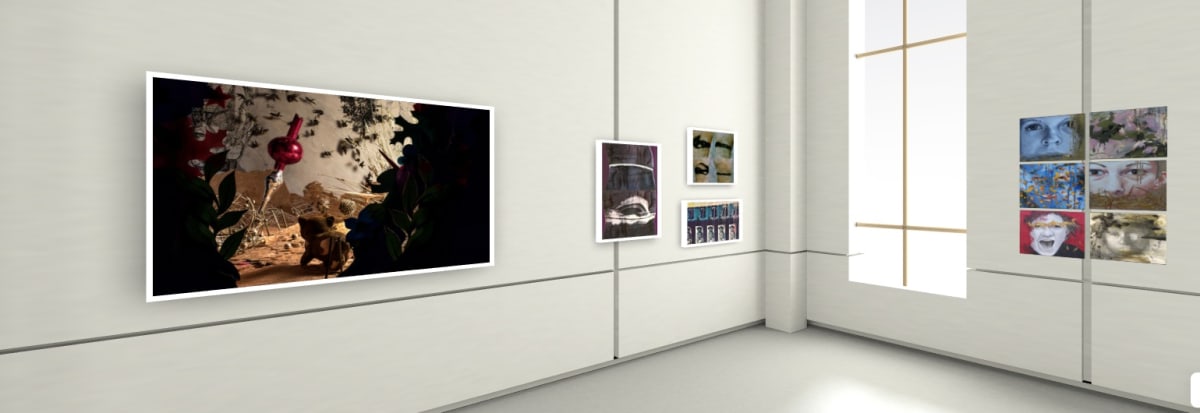Rob Mango
"Beyond the artist's heroic journey, art itself is the mystery that is celebrated in Mango's work. We see this reverence in his summoning the history of art, in images of classical sculpture and other works, and in his freewheeling melding of genres - abstraction, realism, symbolism, and surrealism. Like the artist, the paintings are mutable and enigmatic, best apprehended as they were made - directly and intuitively. And it is as art these works persist, free of interpretation, as painterly evocations of the psyche imagining itself before our eyes."
- John Mendelsohn
The works which comprise the retrospective of Rob Mango each in their own way represent a watershed event in the artist’s development or life experiences that he unknowingly shared with others. If the artist is the representative idealist for our time, believing in ideas and manifesting expressions that are purer and more primal than the product of any other industry or milieu, then Rob Mango is one of the best versions of such a figure. His work is emboldened by the idealism associated with formalism, its relevant social conscience, and a measure of idiosyncrasy, all without equal. Each of the works on view has a specific story to tell.
While some may view the consistent manifestation of symbols as a form of idealistic expression, and as a way of avoiding a personal statement, it is perhaps indulgent to expect an artist to make mere declarations of his works. Mango needs to create his own versions of the symbols that populate them, making them idiosyncratic, and allowing the world to peer into his reality. If the view they provide is ambiguous or complex, then that is the struggle of the viewer. Mango leaves it up to them to make of it what they will.
- David Gibson
Mango's work is included in numerous private collections; his solo exhibitions include Duane St. Gallery, New York; Neo Persona Gallery, New York; Dillon Gallery, New York; Walter Kelly Gallery, Chicago; N.A.M.E. Gallery, Chicago; Krannert Art Museum, University of Illinois at Urbana-Champaign; Gallery Chastain, Taos, NM; Galerie L'Orangeraie, St.Paul De Vence, France; RADOST Gallery, Prague, Czech Republic.
MANGO . AMISS IN THE ABYSS from ftrackfilms on Vimeo.
"For the artist Rob Mango, the city is a dream theater, the setting for an epic drama played out across space and time. The city is New York, with its familiar landmarks, but a fantastic Gotham populated by fierce and beautiful figures, imposing enough to rival the towers around them. These personages, from many epochs and cultures, seem to have emerged from an elevated realm where gods, warriors, and a panoply of mythic characters coexist."
- John Mendelsohn
Rob Mango was born in Chicago in 1951, and grew up in the suburban town of Midlothian. His early interest in art was encouraged by his parents; at age fourteen he took classes in the junior museum school of the School of the Art Institute of Chicago. As a young art student, Mango was drawn to the paintings of leading artists in New York: Jasper Johns, Robert Rauschenberg, James Rosenquist, and especially Larry Rivers. Mango was intrigued by Surrealism, but skeptical as well, and put his energy into learning the oil painting techniques of European masters from the Renaissance to Impressionism. He immersed himself in the works that emerged during cultural ferment of the 1960s, including the writing of William Burroughs and Alan Ginsberg, and the films of Frederico Fellini and Luis Buñuel. Mango's ideas about human consciousness were informed by his reading Freud and Nietzsche.
Mango was a high school track star, received a full athletic scholarship to the University of Illinois. In 1972 he set a world record anchoring the two mile relay at the Houston Astrodome to win the U.S track and field championship, and was a finalist in the Olympic trials. The following year he recorded the fastest time in the world for the indoor 880 yd. run. At the University of Illinois, Mango focused on painting, and received a BFA in 1973 and an MFA in sculpture in 1976, following studies at the University of New Mexico. He found success exhibiting his work in galleries in Chicago, but by 1977 he was ready to move to New York.
New York had a profound effect on Mango - he was starting over in a city where he had no contacts, but where the atmosphere was extremely stimulating for a young artist. He settled in Tribeca, then a gritty warehouse district in downtown Manhattan and a nascent artists' community. As a pioneer in the neighborhood, Mango met other young painters and he started to exhibit his work in Neo Persona Gallery (with Norman H. Segal), which stayed in business from 1981-1994). Collectors began acquiring his paintings, garnering the attention of well-known figures including Robert De Niro, Martin Scorcese, and Bob Dylan. Mango discussed these encounters, and the story of his life and work in his recently published Memoir, 100 Paintings: An Artist's Life in New York City. An inspiring activity of Mango's early years in New York was his nightly runs through Lower Manhattan's desolate streets and waterfront. On these runs Mango found himself visualizing complete paintings of the city transformed in his imagination.
The Rhapsody series of thirty paintings, created from 1982-2003, reflect the artist's autobiography and the life of the city, including his witnessing of the tragedy of 9/11. In 1994, Mango cut up some of his paintings of male nudes, and then used the pieces to begin a new, on-going body of work-three-dimensional reliefs of female figures that combine both painting and sculpture.
Artist ROB MANGO Takes Readers on a Beautiful Journey through His New Memoir
ARTQUIPS↗︎
"100 Paintings: An Artist's Life in New York City" by ROB MANGO -- Review by DAVID GIBSON
HUFFPOST↗︎
ROBERT MANGO Speaks Out
TRIBECA CITIZEN↗︎
ROB MANGO on Opening a Tribeca Gallery in 1984
METRO↗︎

